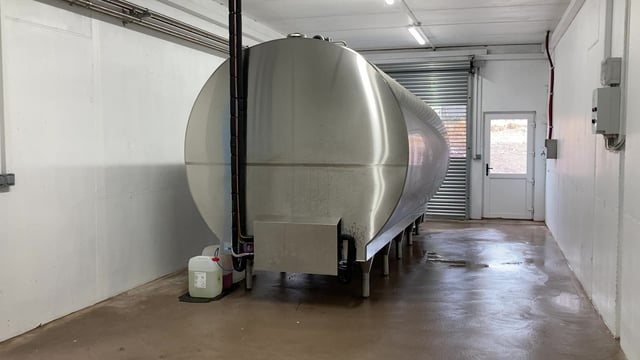Autumn calving: Keeping SCC below 100
As winter milking is already a costly system, keeping the somatic cell count (SCC) down is crucial in order to avail of bonuses.
SCC will rise as cows feel stressed during calving, making it easy for farmers to let is slip above the threshold while calves are flying at them.
Generally, an increase above 100,000 cells/ml in terms of SCC will significantly impact your milk cheque, as well as your animals' performance in general.
Despite this, approximately 60% of the herds in Ireland have cell counts below 200,000 cells/ml, meaning 40% of farmers are struggling with SCC issues.
Farmers must remember that an SCC over 200,000 often indicates sub-clinical mastitis, while levels above 400,000 means there are animals seriously infected.
Autumn calving
Farmers need to be most conscious of rising SCC in the last two to three weeks before calving as well as the first month after calving.
To minimise SCC, farmers should use the following protocols for freshly calved cows:
- Milk separately from main herd;
- Thoroughly wash and disinfect/change gloves before and after handling the cows;
- A pre-spray of disinfection is advisable;
- Inspect foremilk;
- A California milk test (CMT) on the freshly-calved cows at the last milking before joining the main herd.
The utmost hygiene is the main factor in keeping SCC down, whether that be in calving boxes, cubicles or the parlour.
A freshly-calved cow will need access to clean dry cubicles which are brushed and limed twice a day; the cows will also need adequate feed space and the shed should be well ventilated to prevent bacteria growth.
The milking parlour should be washed down after each milking, with features such as cluster flushing aiding in the reduction of SCC also.
All cows should be milked out properly while following the same routine, and the vacuum of the parlour should be tested even if the parlour has been serviced.
It is also important to be using the correct post milking teat disinfection of roughly 15ml/cow/milking, ensuring full teat coverage.
By carrying out a CMT you will be able to identify any mastitis infections in the herd, with sensitivity and culture testing help identify the infection so proper treatment can be administered, reducing the risk of it spreading to other cows in the herd.
Milk recording should also take place in early December as soon as all the winter milking herd has calved down.
Any animals which have infection, whether they be clinical or sub-clinical should be segregated from the herd or their cluster must be thoroughly disinfected post-milking.
All clinical cases should be recorded to allow for case histories to be created to help identify any problem cows in the herd that might go undetected.
If all these measures are put in place, it should help your herd achieve SCC levels of less than 100,000 cells/ml during the early lactation, which will set the herd up for low SCC for the whole lactation.





